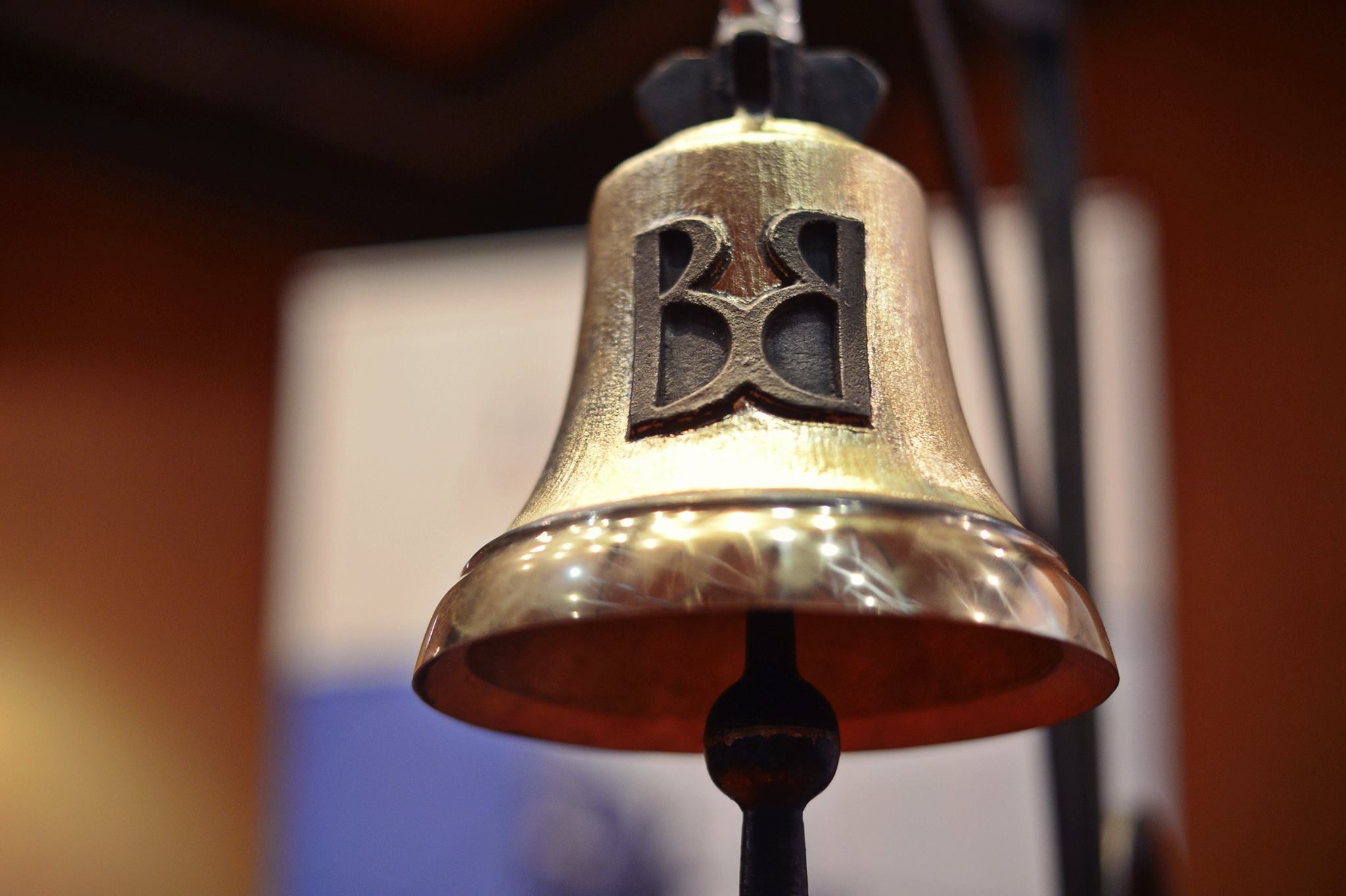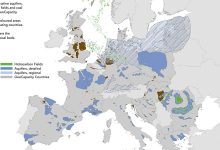Surprising developments in the oil and gas sector listed on Bucharest Stock Exchange
The complex developments on the international oil market have led to dramatic changes in the structure of financial results of oil and gas companies listed on the Bucharest Stock Exchange (BSE). Rompetrol Rafinare has turned, after 11 years, from loss to profit and Conpet registered a new historic profit, OMV Petrom has reported losses for the first time since privatization, while Romgaz and Transgaz have barely managed to maintain their performance in an adverse environment. Summing up the figures, the amount of profits made in 2015 by the oil and gas sector on the BSE halved against the previous year, the loss doubled and the total turnover decreased by 28%. On the stock market, however, the developments that followed the release of results show that they were better than the expectations.
February, a month full of financial reports at the Bucharest Stock Exchange, shows that, overall, the oil and gas sector’s balance sheet at the end of 2015 is not a good one: the cumulated profits of the oil & gas companies included in the BET-NG index were only slightly above RON 2 billion, as compared to RON 4 billion in 2014; the cumulated reported losses doubled, from RON 262 million last year (loss being registered by RRC) to RON 692 million (of which RON 690 million is the loss recorded by OMV Petrom – see the table ‘2015 Financial results’); the aggregate turnover in the field decreased by 28%, from RON 53 billion to RON 41 billion. Significant in this context are OMV Petrom and Rompetrol: the first one, a company that usually registered more than half of the sector’s profit, turned to loss in 2015 for the first time in its post-privatisation history; the second one, which traditionally was in the red, evolved in the other way, turning from loss to profit for the first time in 11 years.
Clues and stock exchange indices
The figures reported, both the positive and especially the negative ones, are not surprising, as they are the result of decreasing oil prices down to the level of USD 30 per barrel in the latter part of 2015; on the other hand those figures are subsequent to a series of financial reports from regional or international oil & gas companies, showing that the extractive and services sectors are going through a difficult period, while the refining field and the companies dealing with transport and storage have a window of opportunity. These developments seem to have been anticipated by the evolution of BET-NG index, which lost 25% of its value, falling from a level of 700 points down to nearly 500 points since February 2015 (the moment of releasing the financial results for the previous year); the largest correction occurred as of June last year. BET-NG, the index of the energy sector on the BSE, (which aims at the overall evolution of the 11 companies in the field, on capital market in Romania) has drawn a decline in speed and amplitude significantly higher than the rest of the market, reflected in the index BET-XT which, during the same interval, lost only 15% (BET-XT includes a total of 25 companies with businesses in various sectors, being a relevant indicator for the market as a whole). This divergence reveals ‘pessimism’ in regard to the energy sector – perhaps more obvious than would have been the case if we look at the developments of regional indices. The ‘pessimism’ revealed by the Stoxx Eastern Europe 300 Oil & Gas index, by comparative evolution to the Stoxx Eastern Europe 300 index is significantly reduced: during the same interval, Stoxx Eastern Europe 300, as reference to the capital market in Eastern Europe as a whole, fell by 24%, while the index of the oil and gas sector fell by only 19% (Stoxx Eastern Europe 300 Oil & Gas is an index that tracks the evolution of the 26 oil and gas companies included in the Stoxx Eastern Europe 300 index; this, in turn, reflects the evolution of the most important 300 companies in Eastern Europe from all sectors).
On the other hand, the developments of the Bucharest indices seem to be in line with those recorded in Western Europe, where the Stoxx Europe 600 Oil & Gas index (representative for the oil and gas industry in Western Europe) lost in the same period more than the Stoxx Europe 600 index – which tracks the overall evolution of the Western European capital market. Thus, the oil and gas index fell by over 22%, while the Stoxx 600 lost 15% (see the graph ‘Developments in Western Europe’).
Beyond the similarities and differences between the Bucharest and the regional indices or Western European ones, the developments after the release of financial results show that the negative feeling prevailing over the BET-NG index was slightly exaggerated: the energy companies’ shares have gone up following the publishing of results and the sector index gained 7% in just a few sessions.
Leader of the ailing sector
The evolution of BET-NG cannot be regarded otherwise than close to the evolution of OMV Petrom results – the most important component of the index; from the perspective of financial results reported, OMV Petrom was a ‘loser’ in 2015. At least that is how things are seen at a first sight of the company’s press release. “The operating result of the Group in 2015 (EBIT) meant a loss of RON 530 million as compared to the positive result of RON 3.34 billion in 2014,” reads the cited document. The image of the OMV Petrom negative development is supplemented by figures showing that the net loss is RON 676 million in 2015 (far from the RON 2.1 billion profit in 2014 and also the first negative results since privatisation) and that the turnover decreased by 16%, from RON 21.5 billion to RON 18.1 billion (see the table ‘2015 Financial results’). But beyond the reality mirrored by the figures and by the alarming headlines in the media, OMV Petrom’s situation can be seen in a positive note! Data and arguments are not few. It is important to note that the loss is determined in particular (as seen in the report), by the “adjustment impairments of the Upstream productive assets”. In other words, due to lower oil prices, the exploitation segment assets value has been revised downwards and the difference between the initial and the revised value (minus RON 1.9 billion) was reflected as loss in the final result. Why is this important? Because this event is not likely to occur again in the next period, and without this minus, the result on the upstream sector would have been RON 919 million; indeed a figure significantly lower than the one recorded in 2014 (when EBIT was of RON 4.7 billion, except for special elements), but still a positive result in spite of the extremely difficult environment. Especially since the data regarding actual production show that the exploitation operations were almost not at all affected: thus, the total hydrocarbon production was of 65.2 million boe in 2015, a slight decrease as compared to 2014 (65.82 million boe) and the daily production level was of 179,000 boe/day against 180 thousand boe/day in 2014; also the natural gas production was of 5.32 billion cubic meters in 2015, slightly lower than in 2014 of 5.34 billion cubic meters (see the table ‘OMV Petrom output indices’).
These figures have greater relevance if correlated with the operations of the downstream segment. Thus, EBIT, without the special elements of the Downstream Oil segment, improved significantly, reaching RON 1.3 billion against only RON 654 million in 2014 – as a result of higher refining margin (which in 2015 reached USD 8.71/barrel as compared to only USD 1.89/barrel in 2014) and refined product total sales increased by 5%. In parallel, on the gas segment, the negative effect given by the provisioning of outstanding receivables was offset by an increase of 8% in the volume of natural gas sold (by increased supplies to its own Brazi power plant) in a context in which the national consumption of natural gas fell by approximately 5%… and the production of electricity in that plant doubled (2.56 TWh), which overlapped the electricity price increase.
These data probably explain the fact that, despite the figures and the news about the OMV Petrom’s historic loss, the stock market shares rose by almost 8% from a minimum of RON 0.2155 on February 18 to a maximum of RON 0.2330 reached on February 22, during a set of four consecutive positive sessions.
On the other hand, the fact that in 2015 the company laid off about 900 people and the layoffs might continue in 2016 could be a reason for serious concern; in the same range is the reducing of the investment budget and the lack of a timetable for starting the exploitation operations in the Black Sea.
Results and problems for Romgaz and Transgaz
The falling prices and the cut in demand were the challenges Romgaz faced (stock exchange symbol SNG) and Transgaz (stock exchange symbol TGN); both companies succeeded in maintaining a satisfactory level – considering the investors reaction in the first four to five sessions of trading following the release of financial results, climbed the TGN securities by about 6% and the SNG shares by almost 10%.
Turning to the figures, however, Romgaz reported in 2015 a preliminary profit of only RON 1.2 billion, down by about 16% against the previous year (RON 1.41 billion) on the background of falling turnout by approx. 10%, from RON 4.49 billion in 2014 to about RON 4.05 billion (see the table ‘2015 Financial results’). The profit was lower than the market estimates, according to Blue Rock Financial Services analysts, also being below the anticipated level in the Income and Expenditure Budget in 2015, by which the company had set a target of RON 1.5 billion. In contrast, Transgaz has positively surprised the market, according to the analysts of the same brokerage firm, with increasing revenues by 1% (RON 1.7 billion) and a net profit of RON 498 million, up by 2% against 2014 (when it obtained RON 486.4 million). For these two companies – both pillars of the industry and of the Bucharest Stock Exchange – the complementary data to the presented figures are also extremely important! Thus, e.g. for Romgaz, the first of the relevant facts is that the losses increase comes as a result of the company’s receivables to Electrocentrale Bucharest depreciation (RON 238 million) and to Electrocentrale Galati (RON 49 million). Equally important is the giving up of the exploration in Rapsodia EX 29 Est block in the Black Sea, developed in partnership with Lukoil Overseas and PanAtlantic Petroleum.
On the other hand, the company reiterated to continue operations in the Trident block in the Black Sea, confirming the information contained in the press release of October 14, 2015 according to which operations have led to the discovery of 30 billion cubic meters of natural gas. But perhaps even more important for more pragmatic investors is that Romgaz announced the increase of the profit distributable to shareholders by RON 200 million. “To determine the attributable net profit, the net profit for 2015 will be increased by the amortisation of decommissioned fixed assets and of abandoned works… in the estimated amount of RON 200 million,” reads the company release – which has led to the increase of the market price, as dividends reached an yield of about 12% (calculated at the market price on the date of communicating of results). In the series of positive news are included also the prospects arising from the Income and Expenditure Budget for 2016 by which the company has set as target a profit of RON 1.6 billion (by 12% higher than in 2015), a negligible decrease in revenues (0.2%) and a significant decrease in spending (6.3%); in addition, the budgeted investments amount to RON 1.1 billion, by 21% higher than in 2015.
 Not least it is worth noting that, according to the OMV Petrom pattern, Romgaz used the electricity production operations in 2015 as a means of offsetting the drop in consumer demand; this business segment brought revenues of RON 356 million, by 7% more than in 2014 and also increased the company’s market share on the electricity production market to 2.74% of the total.
Not least it is worth noting that, according to the OMV Petrom pattern, Romgaz used the electricity production operations in 2015 as a means of offsetting the drop in consumer demand; this business segment brought revenues of RON 356 million, by 7% more than in 2014 and also increased the company’s market share on the electricity production market to 2.74% of the total.
Regarding Transgaz, its revenues and profit were close to the previous year’s level; but it is worth noting that Transgaz has also been hit by provisions. The company reported higher revenues by 1% (RON 1.656 billion in 2015 against RON 1.655 billion in 2014) and a declining profit by only 3% (from RON 502.5 million in 2014 to RON 487.4 million).
Concluding, for Transgaz the fall in profit was extremely small, the domestic gas consumption decrease was offset by higher revenues from international transport, while keeping expenditures at the previous year’s level. Transgaz, however, registered an increase of RON 61.6 million in ‘other expenditures’ after provisioning a number of receivables; by December 31, 2015 it had Interagro SA outstanding receivables in the amount of RON 82.8 million (fully provisioned amount) and Electrocentrale Bucharest receivables worth RON 79.9 million (provisions amounting to RON 57 million).
New VIP’s of the stock exchange
Rompetrol Rafinare Constanta (stock exchange symbol RRC) and Conpet Ploiesti (stock exchange symbol COTE), however, were the “stars” of the stock exchange this season. The first one (RRC), by ending the year on profit for the first time in a decade, the second one (COTE), by reporting a new historic high profit.
Rompetrol Rafinare (RRC) concluded 2015 with profits of about RON 281 million (USD 62.2 million), the first annual profit in the last 11 years… to a turnover of RON 17.4 billion (about USD 3.8 billion), significantly lower than in 2014 (RON 25.2 billion). 2015 is thus the year when RRC became one of the most profitable companies on the Bucharest stocks – shoulder and shoulder with the undisputed leader hitherto, OMV Petrom. The figures regarding the operational activity completes the positive image of the company: Petromidia, which represents about 40% of Romania’s refining capacity, processed about 4.95 million tons of crude oil in 2015, almost the same level as in 2014 (5.05 million tons), although the equipment was stopped for overhaul for a longer period. Exports increased quantitatively by about 2% against the previous year, although their value was of only USD 1.3 billion (below the value in 2014 when the oil prices had been significantly higher).
The RRC evolution was not necessarily surprising… on the one hand, as lower oil prices favour refiners; on the other hand, because the quarterly positive developments could be anticipated from the first quarter, but this is an event both for the stock market and for the oil sector. Not surprising, but certainly an event, were the COTE developments, which reported in 2015 a new historical highest profit: RON 54.3 million – an increase of 5.6% as compared to 2014 (approximately RON 51.4 million) (see the table ‘2015 Financial results’).
The company also reported revenues of about RON 411.8 million – against only RON 403.1 million in 2014, due to the 5.5% higher quantity of products transported. This growth is driven by the increased quantity of goods transported by the domestic transport subsystem by 15.6%, from 6.63 million tons in 2014 to 6.99 million tons – exceeding the amount forecast in the year’s income and expenditures budget of 6.36 million tons.
In COTE’s case an improvement in expenditures is noticed, which rose by only 0.4% to the level of RON 349.5 million, and a 19% increase in revenues from imports, up to RON 70 million, thus compensating for the declining revenues from domestic transport, which brought to the company only RON 309 million (less than 2014). “Conpet has already made the step into the ‘high society’ by changing the type of management and by better communication with the investors, has increasingly become an attractive investment to foreign investors,” said Mihai Căruntu, analyst with BCR, as interpretation in terms of the market of the results and of the market price. For good reason, because Conpet Ploiesti is the equivalent of Transelectrica and Transgaz on the transport of crude oil, operating (as concessioner) the oil National Transmission System (SNT – the pipes network that collects the oil extracted from the exploitation blocks and the imported one and transports it up to the handover points to the manufacturers and importers); COTE actually supplies refineries with crude oil and derived products from domestic and imported sources, so the company’s evolution and prospects should be seen in very close correlation with those of its customers: OMV Petrom – which held a 84.2% share in COTE’s turnover at the end of H1 2015; Lukoil – in the same interval had a share of 13.9%; and Rompetrol – which by mid-2015 had a share of 1.3%. In this context, OMV Petrom’s announcement to further close down another 350 of the 7,500 wells it operates in Romania is not expected to be auspicious for Conpet. The situation is not so serious because, through the contract signed with OMV Petrom for the transmission of oil and other derivatives, valid for 2016, COTE should receive about RON 286.7 million, by only 7.8% less than in 2015 (RON 311.1 million); moreover, the lower value of the contract with OMV Petrom will be at least partially offset by the increase in value of the contract concluded with Petrotel refinery, controlled by the Russian company Lukoil, which is worth RON 67.4 million, by 58% higher than the one in 2015 (RON 42.6 million); and, as of January 1, 2016 NAMR has approved COTE’s request of the fare increase by 1.41% for the transport of domestic crude oil and the increase of the local tariff by 1.47% for the transmission of imported crude oil.
Disappointing developments
And if RRC and COTE are the pleasant surprises in 2015, Oil Terminal (stock exchange symbol OIL) and Rompetrol Well Service (stock exchange symbol PTR) are at the other end, reporting disappointing financial results. For PTR these were not really difficult to predict – given the difficulties which the ancillary services for exploitation and exploration operations are going through, for OIL the result, although significantly better than the one last year, was actually surprisingly poor. Thus, OIL reported a net profit of nearly RON 1.3 million, by 86% higher than in 2014 (RON 0.6 million)… but on dramatic drop against the one reported for nine months, when the company had a profit of RON 16.31 million (against RON 0.17 million profit for nine months in 2014).
Therefore, in the fourth quarter, about RON 15 million evaporated out of the profit. This made the company’s shares fell by 30% (from a maximum of RON 0.119 per share before the publication of results to a low of RON 0.0844 on the day of their release). Subsequently, the shares stabilized around the RON 0.0976 threshold, i.e. about 10% below the price recorded before the respective reports. The quotation is justified by the fact that the report states that the company is not on track: operating expenses doubled (RON 24 million against RON 12 million in 2014), personnel expenses increased (RON 60 million in 2015 against RON 57 million in the previous year) and the costs of raw materials went up (from RON 4.4 million in 2014 to RON 7.2 million in 2015). On the other hand, the revenues from services rose by 29% to RON 137.3 million (up from RON 106.1 million in 2014), in the category ‘other operating revenues’ incomes of about RON 14.5 million were reported (over five times more than RON 2.8 million in 2014) and the financial income doubled as compared to 2014, reaching RON 1 million. Thus OIL does not lack prospects; at least because it has a huge margin for profitability not yet capitalised in a context where there is room for the increase of crude oil imports (a segment where Oil Terminal is an unrivalled player!). Such a perspective is clear for example in the contract concluded with Lukoil (which controls the network of gas stations with the same trade mark and Petrotel refinery in Ploiesti) which reads that they will pay in 2016 an estimated amount of RON 40 million for services related to export and import of oil and oil products. The amount is almost by 19% higher than the contract last year when, for the same services, Lukoil paid RON 33.6 million. In addition, the contract concluded by Lukoil with Iran and the trade relations lying ahead between the two parties, make an out of OIL an indispensable intermediary and a possible positive surprise in the future.
Unlike the way investors received the OIL results, the RON 2.1 million loss reported for 2015 by Rompetrol Well Services (owned by KazMunayGas) had no effect on the stock exchange, the company’s securities evolving sideways around the level of RON 0.34 per share. That maybe because the negative prospects were visible since the end of 2014 (when profits fell three times against 2013), being maintained in 2015, when the results for the quarter and for half year were consistently weaker than those of similar periods in the previous year. By the end of 2015 the company recorded a 40% fall in revenues from RON 88.5 million to RON 50.1 million, a decrease of costs just over 30% (from RON 80 million to RON 54 million) – while personnel expenditures, the most difficult to reform, accounted for almost half of them (RON 21 million, down by only 18% against 2014). Through sustained effort to spending restructuring, PTR stands chances to overcome this extremely troubled period for the extraction sector related services – period characterized by cuts in producers’ investments (mainly concerning OMV Petrom and Romgaz). The decisions taken by the two large players generated not only lack of contracts, but also tough renegotiation of the terms of already concluded contracts. Hence, two of the companies of oilfield services went out of the market since mid-2015 (Foraj Sonde Scaieni and Foraj Sonde Ernei), while Foraj Sonde Craiova and Foraj Sonde Videle have barely managed to survive, while registering dramatic declines in revenues and losses as of mid last year.
Conclusions and prospects
The figures in the oil and gas sector on the BSE show therefore that the decline in oil prices have had indeed a strong impact on the results, but that the negative effects on the companies’ balance sheets were relatively kept under control. Also, it is worth noting that the results of the largest players were influenced by accounting elements with a low probability degree to occur in the near future. Especially that the oil price seems to have anchored above the USD 30 per barrel threshold – an element more than relevant for the industry and for the capital market in Romania – in a context in which, at the level of USD 40 per barrel, OMV Petrom would have returned to profit, as stated by the company’s CEO Mariana Gheorghe, while addressing the investors.











